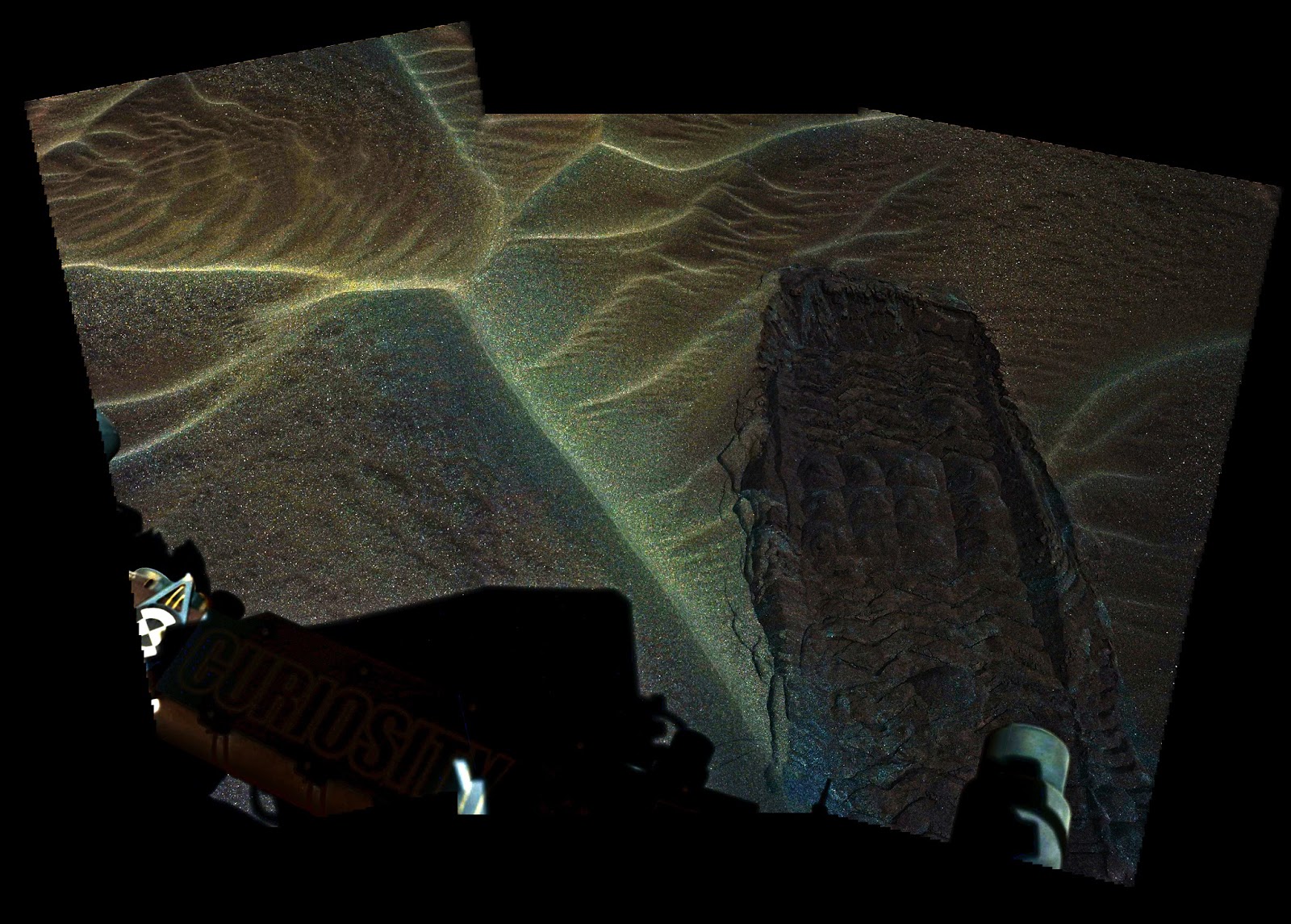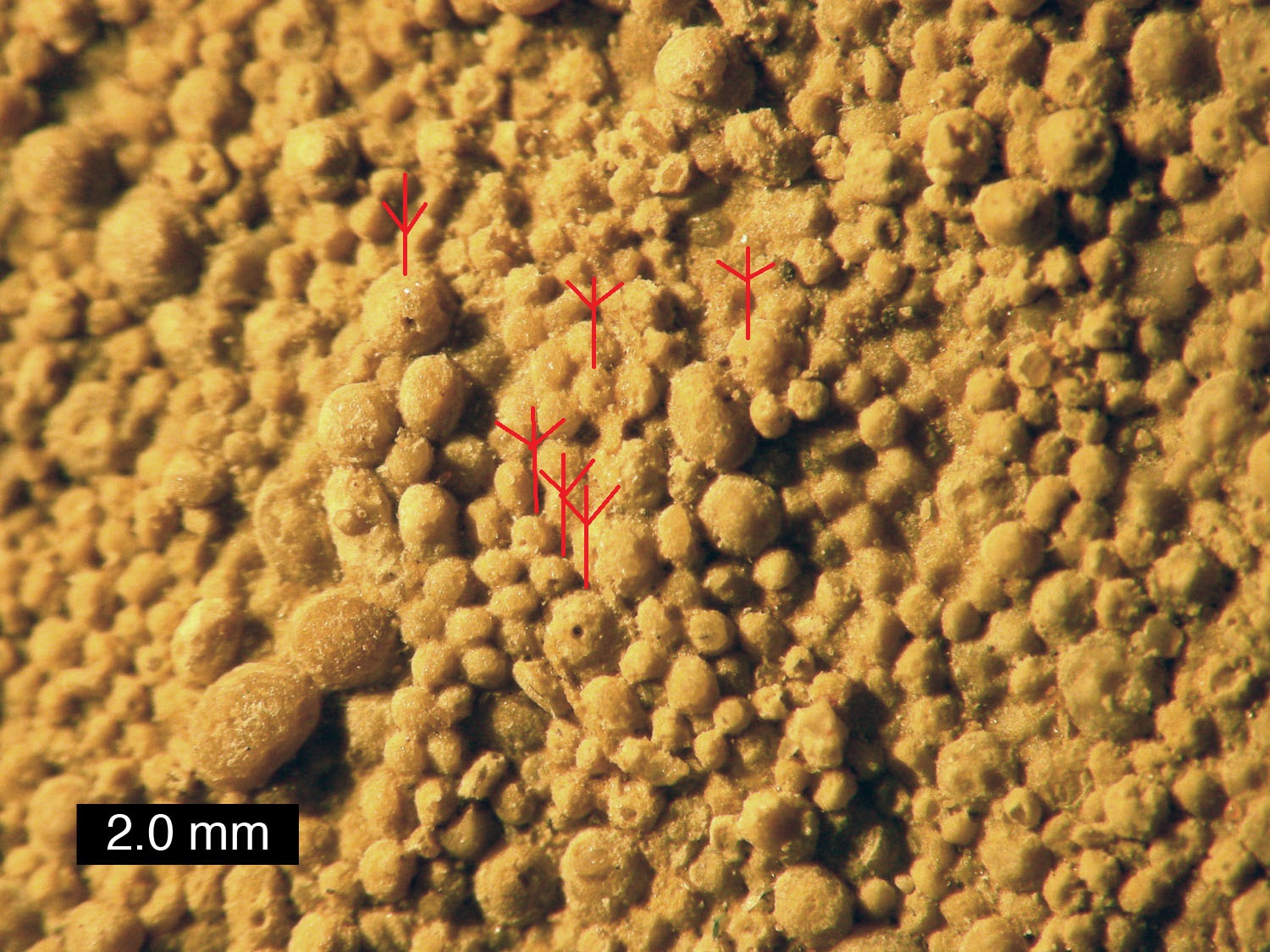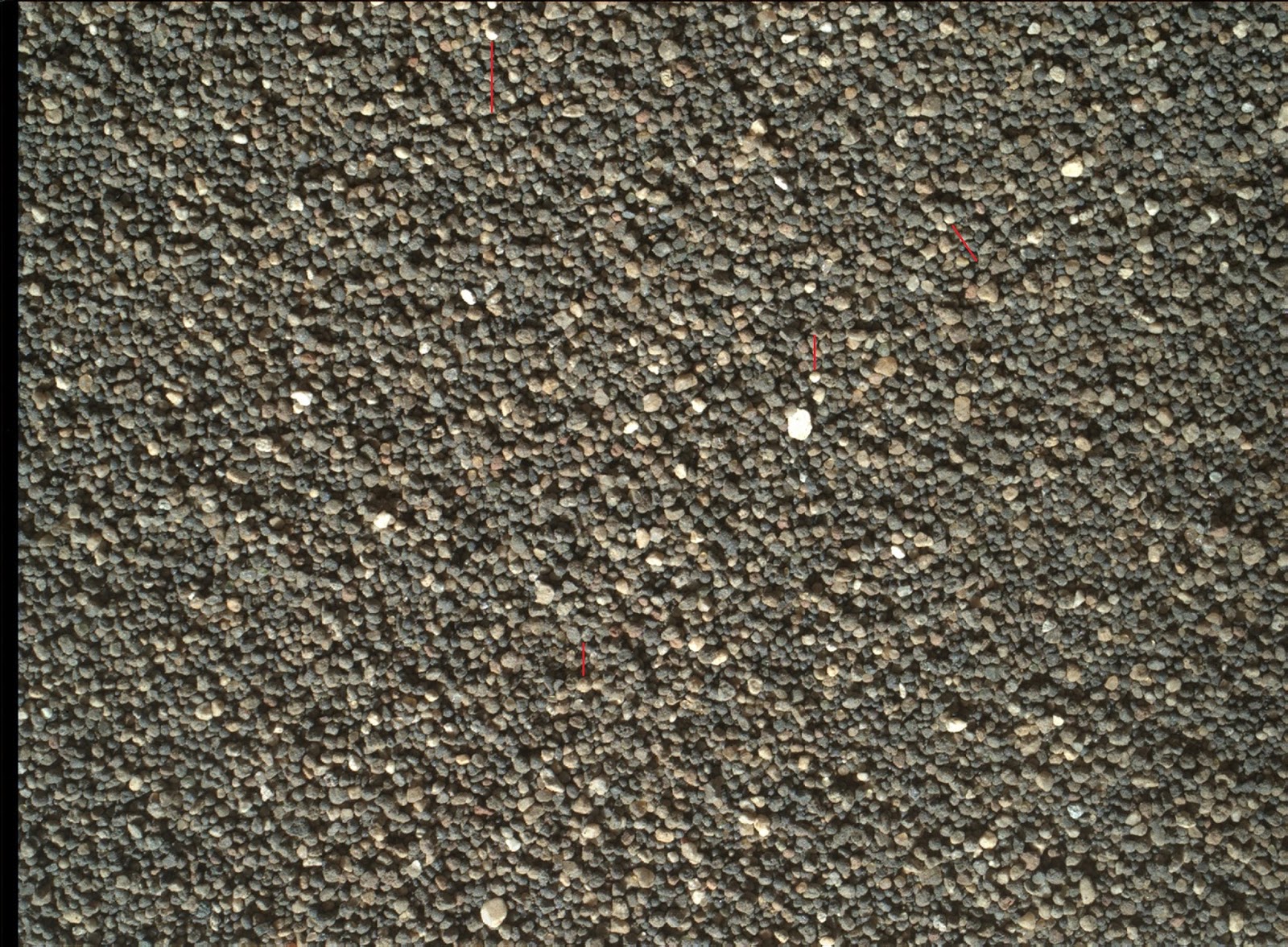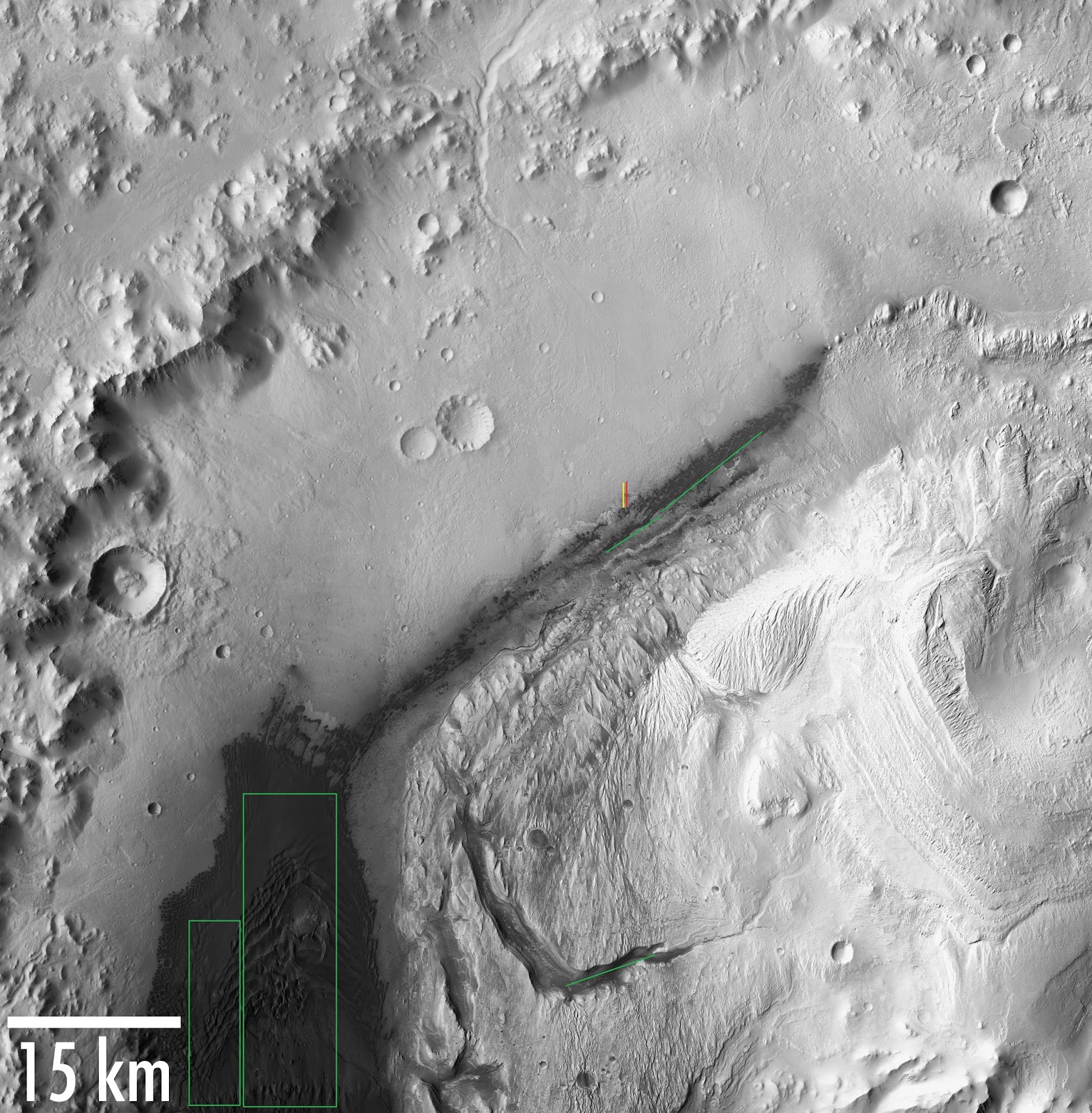| Online: | |
| Visits: | |
| Stories: |

| Story Views | |
| Now: | |
| Last Hour: | |
| Last 24 Hours: | |
| Total: | |
Numerous Past Life on Mars
Mars Bagnold Dune No. 2 contains numerous ooids (photo below). Ooids are usually composed of calcium carbonate, which is the main component of shells of marine organisms. The nuclei of ooids can be shell fragments of marine organisms (https://en.wikipedia.org/wiki/Ooid#Formation ).
The above microscopic image was taken by NASA’s Mars rover Curiosity on Dec. 3, 2015 (Sol 1182) near Bagnold Dune #2, Gale Crater, Mars. Red arrows point to some of the ooids on the sand dune. They are all smaller than 2 mm across (see scale bar at
https://www.flickr.com/photos/105796482@N04/23547408931/sizes/o/ ).
Full size of the above figure:
https://www.flickr.com/photos/fossil_lin/22926659854/sizes/o/ .
Image source: en.wikipedia.org/wiki/Ooid
Ooids on Mars were first mentioned by jccwrt inhttp://www.unmannedspaceflight.com/index.php?s=168811b1046f5fa132f08128aa40edec&showtopic=8114&view=findpost&p=227788
Added on Dec. 7, 2015: Numerous White Ooids on Mars
NASA’s Mars rover Curiosity used its left Mast Camera to acquire the above panorama near Bagnold Dune #2 on Dec. 2, 2015 (Mission Sol 1181). Numerous white ooids are visible in this mosaic alone. More are visible in images taken on Dec. 5 (Sol 1184).
Added on Dec. 9, 2015: More Martian Ooids Marked in These Two Figures:
The above microscopic image was taken by NASA’s Mars rover Curiosity on Dec. 5, 2015 (Sol 1184) near Bagnold Dune #2, Gale Crater, Mars. Four red lines go to whitish ooids on the sand dune. They are all smaller than 2 mm across. Image source:
mars.nasa.gov/msl/multimedia/raw/?rawid=1184MH00054800104…
On Earth, at the Bahamas alone, there are billions of tons of ooid sands (note 1). The following photo shows some of the carbonate in Gale Crater:
Photo shows a part of Gale Crater, Mars. Mars rover Curiosity landed at upper right. Mount Sharp is at lower right. Red and yellow lines at center mark High Dune and Namib Dune. Green lines and green rectangles mark dunes similar to High Dune and Namib Dune. Enormous is the dune at bottom left. Image source: see reply 278 inwww.marsroverblog.com/discuss-213447-active-marspage14.html
Added on Dec. 12, 2015: Correct Identification of Ooids
https://blogs.agu.org/mountainbeltway/2014/04/30/ooh-ooh/
Viewers can compare ooids there with those on Mars.
Added on Dec. 23, 2015: Most Aragonite Was Created by Life.
“The second most common type of sand is calcium carbonate, for example aragonite, which has mostly been created, over the past half billion years, by various forms of life, like coral and shellfish.” Quoted from the second paragraph in https://en.wikipedia.org/wiki/Sand








